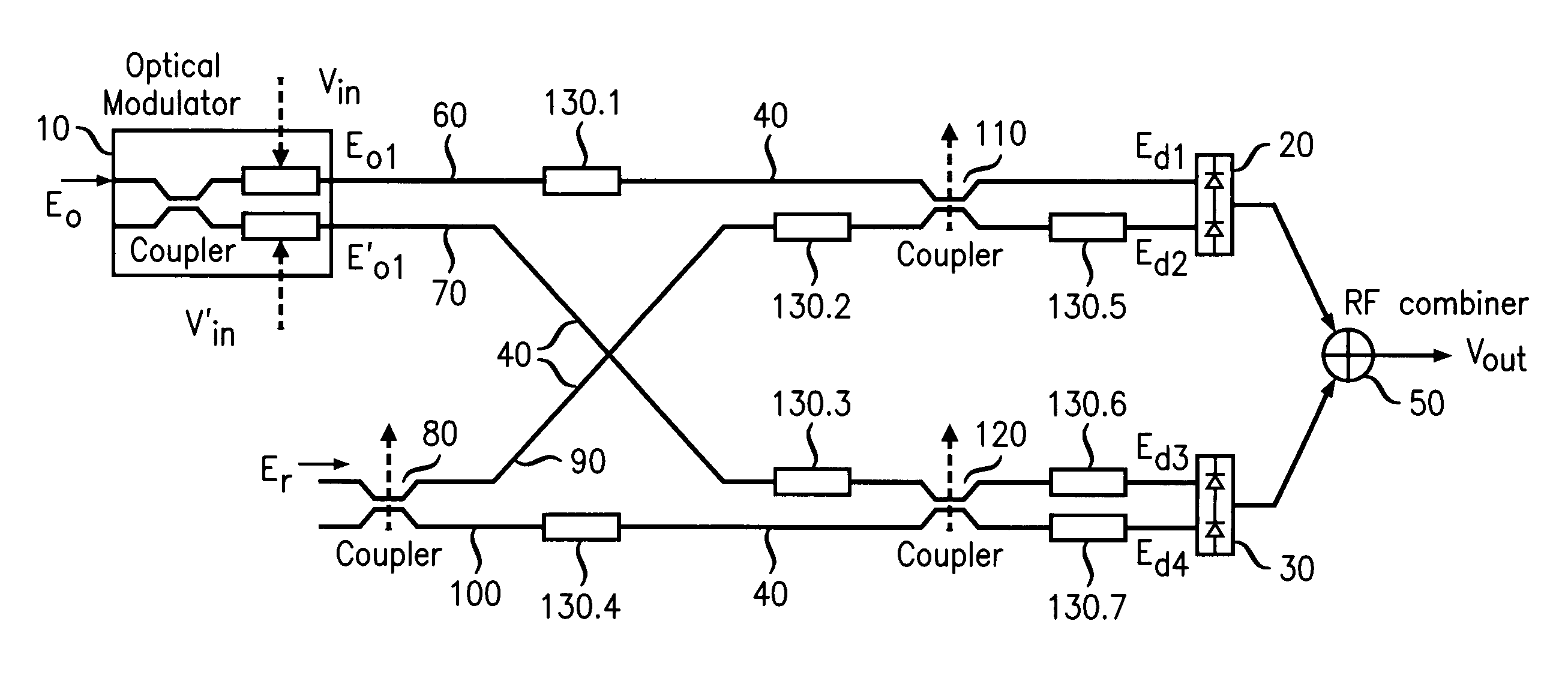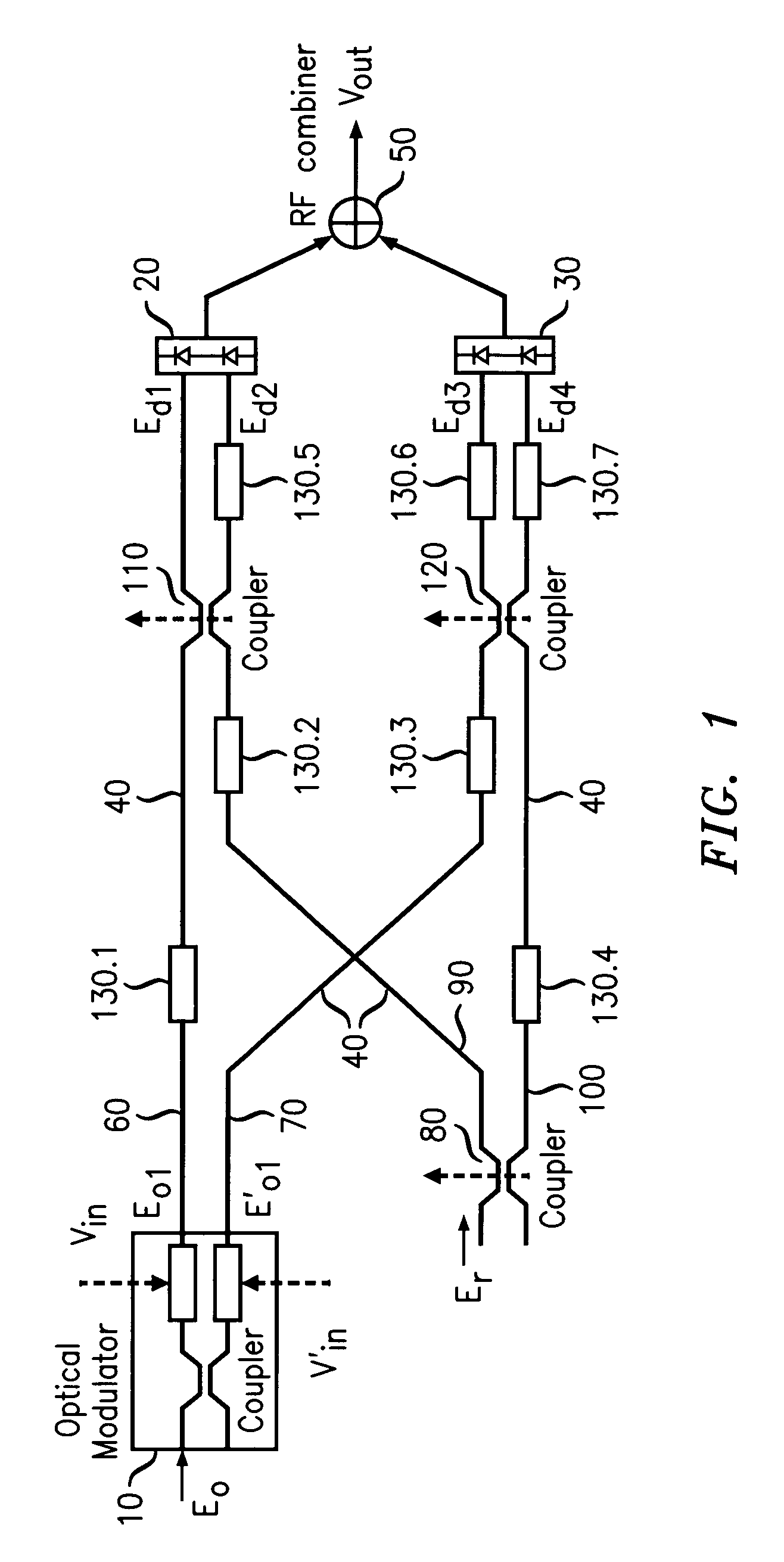Method and apparatus of microwave photonics signal processing
a microwave photonics and signal processing technology, applied in the field of radiofrequency signal processing, can solve the problems of often encountered trade-offs by practitioners, and achieve the effect of high bandwidth operation
- Summary
- Abstract
- Description
- Claims
- Application Information
AI Technical Summary
Benefits of technology
Problems solved by technology
Method used
Image
Examples
Embodiment Construction
[0013]The principles of LINC are known. Consider a carrier frequency ω and a time-varying signal a(t) which varies slowly relative to cos(ωt+θ), where θ is an arbitrary phase angle. Let Amax be the magnitude of the maximum positive or negative excursion of a(t); i.e., Amax=max|a(t)|. The phase function φ(t) is constructed from a(t) according to the transformation,
12φ(t)=cos-1(a(t)Amax).
[0014]A simple trigonometric identity can now be invoked to show that the amplitude-modulated signal a(t)cos(ωt+θ) can be expressed as the sum of two constant-amplitude, phase-modulated signals; i.e.,
a(t)cos(ωt+θ)=Amax2cos(ωt+θ+12φ(t))+Amax2cos(ωt+θ-12φ(t)).
[0015]Those skilled in the art of power amplification for wireless communication, among others, have recognized that tradeoffs exist among efficiency, linearity, and bandwidth. In particular, the conventional amplification of amplitude-modulated signals having large peak-to-average power ratios may test the limits of favorable tradeoffs among those...
PUM
 Login to View More
Login to View More Abstract
Description
Claims
Application Information
 Login to View More
Login to View More - R&D
- Intellectual Property
- Life Sciences
- Materials
- Tech Scout
- Unparalleled Data Quality
- Higher Quality Content
- 60% Fewer Hallucinations
Browse by: Latest US Patents, China's latest patents, Technical Efficacy Thesaurus, Application Domain, Technology Topic, Popular Technical Reports.
© 2025 PatSnap. All rights reserved.Legal|Privacy policy|Modern Slavery Act Transparency Statement|Sitemap|About US| Contact US: help@patsnap.com



